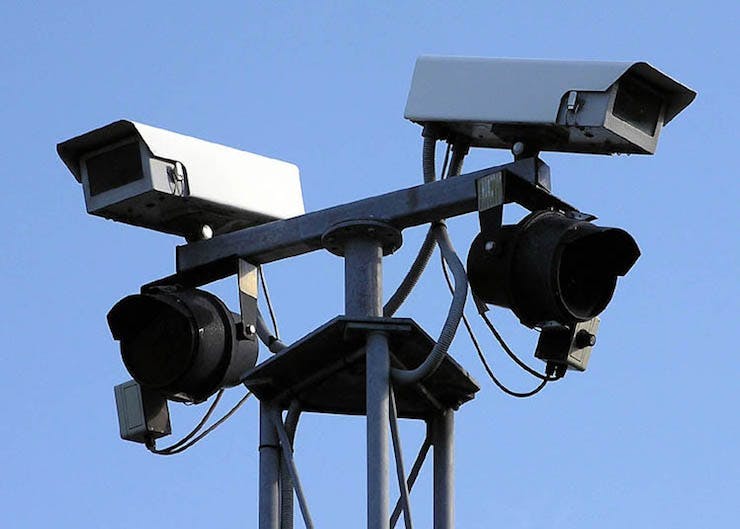Junctions. Sooner or later (usually sooner), you’ll have to tackle them. There are T-junctions, crossroads, unmarked junctions, those with traffic lights or filters… some are easier to navigate than others, and one of the more complex types is the box junction.
Confused or worried about approaching the dreaded yellow box? Our guide to navigating them explains just how simple they really are—so long as you know a couple of key box junction rules.
What is a yellow box junction?
The purpose of a box junction is to control traffic flow, and so they are usually found at busy crossroads or T-junctions. Even where there are other traffic control measures in place, like traffic lights, you can sometimes find yourself unable to drive because of stationary vehicles lined up across your path. That’s where box junctions come in: when everyone follows the rules, they prevent gridlock. Box junctions are indicated by road markings.
That’s right—as though traffic signs weren’t enough, you’ve also got to look at the ground! The ‘box’ is formed by criss-crossed yellow hatching. It establishes an area that must be kept clear at all times, so that traffic can flow as smoothly as possible.
Where else will I find yellow hatchings?
As well as at busy junctions, you might also come across yellow boxes outside of fire stations. They’re used to keep the exits clear for emergency vehicles who, when deployed, need to get on the roads very quickly.
Box junction rules
When you want to know about any driving rules, it’s always worth looking to the Highway Code. In this case, rule 174 deals with box junctions. The first part of the rule says:
"You MUST NOT enter the box until your exit road or lane is clear."
Usually this means that you are not allowed to stop in the box. However, there is an exception: when you are planning on turning right. Let’s look at how the law works in practical terms.
Turning left or travelling straight on
When you’re turning left or going straight on, you need to be able to drive through the box and get out another side immediately. In practice, this means that as you approach a box junction, you always need to look at where you’re wanting to go.
- If there is a stationary line of traffic queued on the road you wish to join, assess whether your car will be able to clear the box before proceeding.
- If traffic is flowing, check that any vehicles ahead of you can clear the box junction—and be sure that you, too, can make it through.
Top tip for navigating yellow boxes
Think of the hatchings a little like a level crossing. You wouldn’t start to cross the train tracks until you’re certain that your whole car can make it to the other side of the barriers. Otherwise, you may end up trapped in the path of an oncoming train. Box junctions are similar—if you can’t make it across, you might end up in the path of other drivers.
Turning right

The only time you’re allowed to stop in a yellow box is when you are turning right. You must still make sure your exit road is clear, but you may have to wait for a gap in oncoming traffic before actually turning. If that’s the case, you’re allowed to wait in the box until it’s safe to turn right.
- Get your car into position by driving slowly into the middle of the box, until the point at which you need to start your right turn. Make sure you don’t stray across into the path of oncoming traffic, who will be expecting you to be stopped in your lane.
- When there’s a safe gap in oncoming traffic, you can turn right and exit the yellow box. If it’s busy and the junction is controlled by filter traffic lights, you may have to wait for the right arrow to light up before you can safely make your turn.
Be very careful of following another vehicle turning right into the yellow box. It is allowed, but you might find that you are unable to turn safely before traffic starts to cross from the other direction.
What if your traffic light goes red while you're waiting to turn right?
As long as you’re waiting to turn right in a box junction when your traffic light turns red, you are still allowed to make your turn. In fact, the safest thing to do is take advantage of the break in traffic before the opposite traffic lights turn green. That way, you won't be in the way or hold other drivers up.
What if I get stuck on the yellow hatchings?
Getting stuck in a box junction is not only against driving law, but can also be highly frustrating for other road users. You’ll find yourself blocking traffic from other directions, which can lead to drivers performing dangerous manoeuvres to avoid you. But as we all know, mistakes sometimes happen.
If you do find yourself stuck in a box junction, the important thing is not to panic. Be aware that cars will be coming from different directions—so check all around you before moving off.
Will I get fined if I get stuck in a box junction?

There are often cameras positioned at busy junctions, and where there is a yellow box, they can snap drivers who stop inappropriately within the hatching. If caught, yes: you will probably get fined. The amount you end up paying depends on how quickly you pay, and where in the country you're caught.
In London, you can be issued with a Fixed Penalty Notice of up to £130; elsewhere, at the moment, the most you'll be charged is £70. Some people criticise box junction enforcement as ‘cash-cow’ exercises (an easy way for a council to make money, with no real benefit to the public). Most of these criticisms are levelled against places where drivers can’t always tell if their exit is clear—for example, where the box is on a hill. However, whether or not you agree with the penalties, box junctions serve a valuable purpose.
By following the rules, you’ll help to keep traffic on the go, as well as avoiding a fine.
Recap
- Box junctions are indicated by criss-crossed yellow lines painted on the road
- Always check to see if your path to exit the box is clear before entering it, whichever way you're turning
- Stop before the painted yellow lines if your exit road is not clear
- Leave enough room behind the vehicle in front to check that you'll be able to clear the box as well
- If you’re turning right, drive slowly into position and wait on the hatchings until there is a safe gap in oncoming traffic
FAQs
Do you get penalty points for stopping in a yellow box?
If you’re caught stopping inappropriately in a yellow box, you will usually receive a fine, rather than points on your licence. However, if your actions lead to an accident, you may be charged with a driving offence, whereby you might be given points as well.
Who has right of way at a box junction?
Oncoming and left-turning traffic usually has priority when driving, and it’s no different when faced with a box junction. That’s why, if you’re turning right, you need to wait until there’s a gap in oncoming traffic before turning.
Can you enter a box when turning left?
Logically, in order to through a box junction, you must, at some point, enter the box. However, when turning left, you should only do so once your exit path is clear and you can cross the junction without having to stop.
What is the reason for the yellow criss-cross lines?
Wherever you see yellow lines on the road, you know that you are being stopped from doing something: waiting, parking or loading. If you're struggling to remember what yellow hatchings mean, think about single and double yellow lines. You probably already know that they refer to parking restrictions, so that might help remind you that you're not allowed to 'park' on yellow criss crosses, either.
Subscribe for driving advice, offers & more
We'd love to let you know about our courses, news and offers via email. You may unsubscribe at any time.
Star Genie Limited trading as PassMeFast. Company number 10093359
Copyright © 2024 owned by Star Genie Limited
PassMeFast, Blue Tower, MediaCityUK, Salford, M50 2ST
